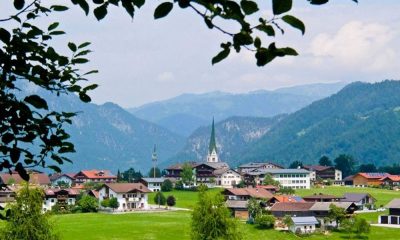Hamburg has 1,734,000 inhabitants. They all want to have fun, excitement, and occupation. You too? Great! Then read on.
1. Speicherstadt
The historical Speicherstadt in Hamburg is the largest warehouse complex in the world, and one of Hamburg’s landmarks and indisputably sightseeing highlights.
The century-old Speicherstadt is located in the Free Port between the Deichtorhallen and Baumwall. It was built at the turn of the century in red brick, typical of northern Germany, with gabled roofs and small towers, which are beautifully reflected in the canals they border. And during night it’s even more beautiful, because buildings, bridges, and canals are lighted. The illumination makes the warehouse complex an impressing place of mystery and dream.
You should plan to go on a harbour tour to see all the details. There is a Captain. His name is “Pruesse,” and he takes off daily from the Landungsbruecken (landing stages). Inform yourself in advance if ebb and flow allow the tour, and when he does start.
2. Town Hall
The Hamburg Rathaus (Town Hall) was built 1886 – 1897 with a splendid sandstone construction in Neo-Renaissance style. After the Town Hall burnt to the ground in 1842, the town council moved into temporary quarters in the former orphanage, after that into the building of the Patriotische Gesellschaft. This temporary solution lasted over 55 years!
The new Rathaus was inaugurated in 1897. It stands on over 4000 oak posts. Very much in contrast to the Hanseatic style, the Town Hall gleams with an elaborately ornate façade which is graced by a total of 20 statues of the Kaiser. It dominates the city centre with its impressive architecture. It is the seat of the city senate and the municipality of Hamburg and has 647 rooms!
The grand banquet hall in the Rathaus is 46 metres long, 18 metres wide and 15 metres high. Five huge paintings depict the history of Hamburg from 800 to 1900. The three chandeliers, each with 278 bulbs, weigh 1500 kilos apiece!
3. Jungfernstieg
This story is amazing: In the old days, families went here for a walk on Sundays and brought out their unmarried daughters (Jungfer – virgin)!
The Jungfernstieg is still something very special, not only because of its ideal situation on the banks of the Alster Lake. For Hamburg residents, it is above all the historic importance of the promenade which plays a significant role.
Today, everything here revolves around shopping in big department stores and luxury boutiques. The famous Alsterhaus and places full of tradition such as Streit’s cinema are also worth seeing. And if you are hungry or just want a refreshment, you can go to the Alsterpavillion. Sit down, watch other people, and relax. Amazing.
4. Fischmarkt
The Fischmarkt is not only famous here in Germany but in the entire world. When you are there you will know why. We call them “Marktschreier,” or Market Screamer. Men and women who has an ostentatious job. All the time. Their entire life.
You can watch them every Sunday morning from 5 to 9.30 a.m. (7 to 9.30 a.m. from Nov. 16.th to Mar. 14th). Since 1703, customers come from near and far to bargain with vendors praising wares of virtually every type at Hamburg’s oldest, most traditional open-air market
5. Landungsbruecken (Waterway Station)
The 700 metre-long floating dock at the underground station Landungsbrücken is Hamburg’s waterway station. This is where harbour tours start.
The first Landungsbrücken were built in 1839 and served as moorings for steamers. They were erected at the edge of the harbour because it was possible to load coal there, which they needed for their engines. Since they sailed with stoked fires onboard, they posed a cauldron of dangers for the harbour. Another reason for the erection of the Landungsbrücken for the steamers at the harbour’s edge.
From 1907 to 1909, an entire waterway station grew out of the first Landungsbrücken. In the Second World War, the Landungsbrücken were seriously damaged. The moving pontoons of today have existed since being rebuilt between 1953 and 1955.
Today, colourful souvenir shops offer waterfront memories to buy, and cosy fish restaurants serve as much fresh plaice or North Sea shrimps as you can eat. The tower on the eastern side indicates the water level as well as the time, and the ship’s bell tolls every half an hour.
So, that’s it. Have a great day!
Marcus Hochstadt

 Entertainment52 years ago
Entertainment52 years ago
 Entertainment52 years ago
Entertainment52 years ago
 Entertainment52 years ago
Entertainment52 years ago
 Entertainment52 years ago
Entertainment52 years ago














